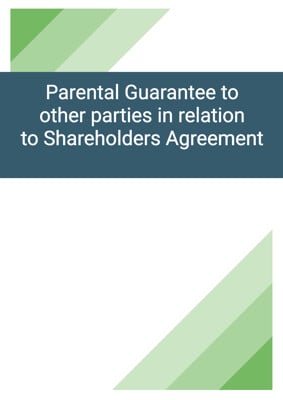How to Tailor the Document for Your Need?
01
Create Document
Fill in the details of the parties. You can click the "Fill with Member’s Information" button to complete it with information saved to your account.
02
Fill Information
Please fill in any additional information by following the step-by-step guide on the left hand side of the preview document and click the "Next" button.
03
Get Document
When you are done, click the "Get Document" button and you can download the document in Word or PDF format.
04
Review Document
Please get all parties to review the document carefully and make any final modifications to ensure that the details are correct before signing the document.
Document Preview
Document Description
The Shareholders Agreement is a legally binding document that outlines the terms and conditions governing the relationship between the shareholders of a company. It is entered into by Party 1, Party 2, Party 3, and Party 4, who have agreed to jointly invest in a company. The purpose of this agreement is to set out the terms governing their relationship as shareholders in the company.
The agreement begins with an interpretation section, which defines various terms used throughout the document. It includes definitions for accounting principles, directors, board, business, business day, business plan, chairman, chief executive, company, shareholders, shares, subsidiary, undertaking, and more.
The agreement then proceeds to outline the purpose of the company, which is to carry out the business described in Clause 2. The business of the company shall be conducted in the best interests of the company in accordance with the general principles of the then current business plan approved by the parties.
Next, the agreement describes the characteristics of the company, including its name, registered office, authorized share capital, and initial directors, chairman, chief executive, and secretary. The necessary shareholders and/or board meetings shall be held to establish the company in territory.
The agreement also covers capital and further finance, specifying that the company's issued share capital may be increased from time to time with the agreement of the parties. The parties intend that the company should be self-financing and should obtain additional funds from third parties without recourse to its shareholders.
The board and management section states that the board shall be responsible for the overall direction, supervision, and management of the company. The board shall comprise directors appointed by each party, and certain matters defined as reserved matters shall require the prior approval of all parties.
Financial matters, information and reporting, confidentiality, non-competition, regulatory matters, relationship with party's group, tax matters, transfer of shares, termination events, default, and other important provisions are also included in the agreement.
The agreement concludes with provisions regarding costs, amendments, invalidity, no partnership or agency, announcements, notices, settlement of disputes, counterparts, and no rights for third parties.
This Shareholders Agreement is governed by the laws of the territory applicable therein, and any disputes shall be resolved through amicable settlement or by the courts of the territory.
How to use this document?
1. Review the Shareholders Agreement carefully to understand the terms and conditions governing the relationship between the shareholders.
2. Ensure that all parties involved in the agreement are clearly identified and their principal places of business are stated.
3. Familiarize yourself with the definitions provided in the interpretation section to understand the meaning of key terms used throughout the document.
4. Understand the purpose of the company and the business it intends to carry out as described in Clause 2.
5. Take note of the characteristics of the company, including its name, registered office, authorized share capital, and initial directors, chairman, chief executive, and secretary.
6. Consider the provisions related to capital and further finance, including the issuance of new shares and funding support by the parties.
7. Understand the role of the board and its responsibilities, as well as the requirement for approval of reserved matters.
8. Familiarize yourself with the financial matters, information and reporting requirements, confidentiality obligations, and non-competition provisions.
9. Take note of the regulatory matters and the need for cooperation in providing information and responding to regulatory actions.
10. Understand the relationship between the company and the parties' respective groups, including the requirement for contracts to be made on an arm's length basis.
11. Consider the provisions related to tax matters and the cooperation required for making returns, claims, or elections for taxation purposes.
12. Familiarize yourself with the provisions regarding the transfer of shares, including the restrictions on transfer, permitted transfers, and the right of the continuing party to purchase shares.
13. Take note of the termination events and the procedures for resolving disputes and settling any claims.
14. Understand the provisions related to default, waiver of rights, amendments, and the invalidity of certain provisions.
15. Consider the provisions regarding announcements, notices, and the settlement of disputes.
16. Ensure that all necessary signatures and dates are included in the agreement.
17. Keep a copy of the fully executed Shareholders Agreement for future reference and compliance.
Not the right document?
Don’t worry, we have thousands of documents for you to choose from:


























